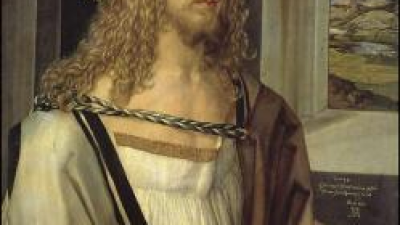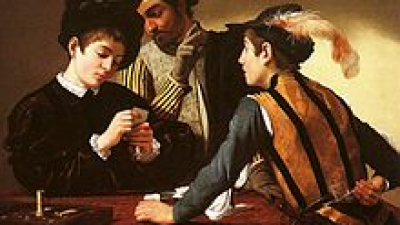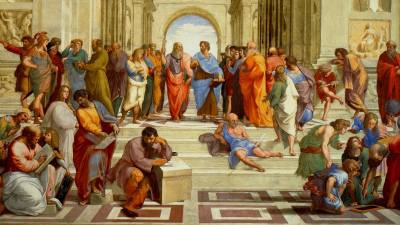The most important queens in history

Source: listas.20minutos.es
These are some of the queens that are considered the most important in history. The photographs are the work of Alexia Sinclair, a renowned English photographer who lives in Australia. His photographs are the summum of the editing programs, and exemplify a know-how and know how to achieve a high quality atmosphere, to always enhance photographic discourse
TOP 12:
Agrippina
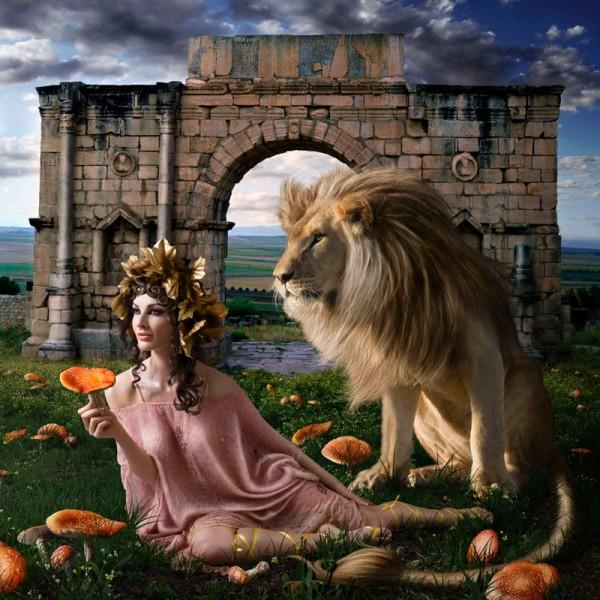
Julia Vipsania Agripina (possibly in Oppidum Ubiorum, 15 AD - † 59 AD), better known as Agrippina the Younger to distinguish her from her mother, was the eldest daughter of Germánico and Agripina la Mayor, great-granddaughter of both Marco Antonio and Octavia, the Augustus's sister. She was also a sister of Caligula, Claudio's wife and Nerón's mother. In AD 28, at just 13 years old, he married the Roman consul Ahenobarbo for the first time. It was this who said of his future son that "from the union of Agrippina and I can only get a monster." And from the union was born Lucio Domicio Ahenobarbo, known as Nerón. In January of the year 40 AD, at 25 years of age and 12 years of marriage, Agrippina widowed for the first time. When her brother Caligula became emperor, she and her two sisters began to enjoy certain privileges that only the imperial family could have. While married to Ahenobarbo, Agrippina had sex with her brother, as did her sisters, and prostituted herself with members of the court, such as her sisters Drusila and Livila, who were also married. The privileges enjoyed by Agrippina began to disappear after the death of Caligula's favorite sister, Drusila. After this event, the emperor began to suffer a mental illness that caused Agrippina to lose his brother's favor. Ambitious as his mother, Agrippina wanted to continue with those privileges that his brother did not offer him now. That is why his lover Getulio Lentulo, his little sister Livila and their lover and brother-in-law widower Lépido joined the plan that sought to recover this way of life. Caligula discovered the plot on time and ordered the death of Lepidus and the exile, after trial, of his two sisters. Separated from her son, who stayed in Rome in the care of her paternal aunt, Agrippina began her exile with the public humiliation of transporting the ashes of one of her lovers. That was how he set sail for the island of Pontia. The murder of Caligula and the appointment as emperor of his uncle Claudius led to the return to Rome of Agrippina and his sister. After reuniting with his son, Agrippina married Cayo Salustio Pasieno Crispo, his former brother-in-law and consul between 27 and 44 AD When he died, before 47 AD, it was rumored that he had been poisoned. Increasingly, Agrippina was having a more intimate relationship with her uncle, the emperor. He, after discovering that his wife Messalina, mother of his son and daughter, was unfaithful, decided to execute her and marry her niece, despite the fact that the marriage of uncles and nieces was illegal and incestuous. The issue was resolved through a special agreement of the Senate At 34 years (40 AD) he married for the third time and last time with his uncle, Emperor Claudius. In addition, he advised his son to marry his new stepsister, Octavia. Once she obtained the title of Empress and Augusta, the first after Livia, and having obtained extraordinary honors and privileges, Agrippina convinced her husband to adopt as heir to Nero, her son, instead of his biological son . And so it happened. Once his purpose was achieved, it was said that he had ordered that her husband be poisoned with fungi, although there is no historical evidence of When, at the age of 16, Nero was appointed emperor, Agrippina used his son, who is said to have sex , to rule Rome. Suetonius explains that Nero bore his mother less and less, threatening to abdicate and exile Rhodes. She gave him reasons, approaching his pretended British political son. After his assassination during a banquet, his influence diminished markedly and was invited to leave the imperial palace. The arrival of Popea Sabina to the imperial court as her son's partner was the end of Agrippina. Popea soon realized that his future mother-in-law influenced his son to meet his needs. Knowing that she was not well received by her, Popea convinced Nero to kill his mother. First he tried to poison her several times. Then he devised to tear down his room while she was sleeping inside, but he discovered the plan and became enraged with his son. Taking advantage of the bad relationship between him and his mother, Nero invited her to a boat to reconcile. She, who accepted, did not imagine that her son's intention was to sink him with her inside. Again, Agrippina discovered the plans and fled. Desperate, the emperor accused his mother of being a member of a fictitious conspiracy and was executed, although the details of this much-thought crime are unclear. His death fulfilled a prophecy of a Chaldean astrologers who, when Agrippina asked them if their son would be king, they said "he will be king, but he will kill his mother." After hearing these words, she replied "Occidat, dum imperet!" (Kill me as long as I reign!) The killer
TOP 11:
Boudica
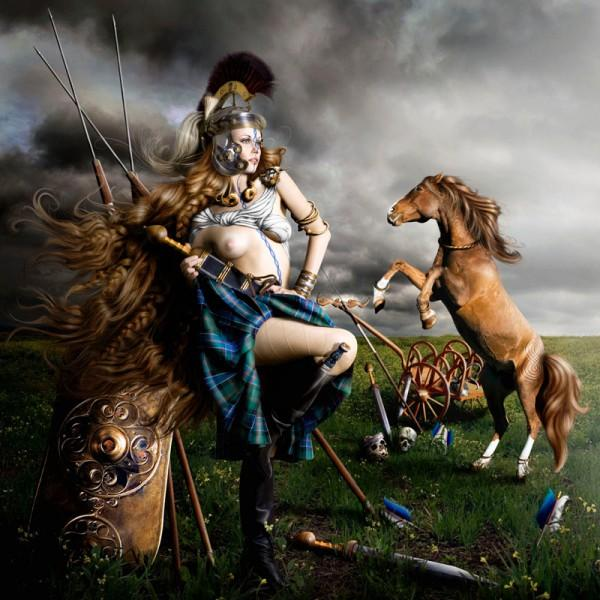
Boudica was a warrior queen of the Icenae, who led several British tribes, including her neighbors the trinovantes, during the biggest uprising against the Roman occupation between the 60s and 61 d. C., during the reign of Emperor Nero. These facts were narrated above all by two historians, Tacitus (in his Annals and in the life of Julio Agrícola) and Dión Casio (in Roman History). His name meant 'victory'. It is also known as Budica, Buduica, Bonduca, or by the Latinized name of Boadicea.
TOP 10:
Elizabeth Báthory

Elizabeth Báthory was not queen, I include her because she is in the series of photographs and her peculiar history. Sometimes reality surpasses us and gives us characters that seem to come out of a horror movie. In the movies the vampires were the favorite creatures of the fans; but in the vision of a dirt that thinks about reality, characters like this are only social or psychological errors. But will her condition of vampire and serial killer be real? In one of the most powerful and most resonating families in the Balkans, formed by a cardinal, a princess and the prime minister of Hungary (his father). Elizabeth Bathory was born in the year 1560 and probably had ties with the family of Vlad Tepes, which served as a link for this same character to be crowned in Wallakya. As a child and as some texts reveal to us, Elizabeth Bathory suffered serious seizures, caused by a disease unknown at that time. Many historians think that this disease was a kind of anemia aggravated by some psychic illness, others instead attribute it to other effects such as epilepsy, or others that could not be detailed even at this time. Elizabeth Bathory lived a transhumant childhood due to the continuous struggles that the empire had against Persian tribes and also due to her forced marriage to Count Ferencz Nasdasdy of Hungary to the young 15 years. After these events the count adopted the last name and therefore Elizabeth kept her name and her crown. As the story tells us, Elizabeth and the earl were not the happy couple expected by her father, since they had severe fights that often fell into disgrace for their subjects. It is known that the couple lived in Csejthe Castle in Nyitra, Hungary. Elizabeth Baothory, like her predecessors, belonged to a Hungarian occult order, which was gradually induced in her art by one of her servants named Dhorka who possessed the true evil of a witch. In the castle several letters were found that relate this order to the Draco Order, the same one that gave rise to Vlad Tepes within the dark and blood art. Because of spending long hours with his maid and guide Dhorka, I quickly enter the occult and awaken a sadism as macabre as incredible. The long hours and days of absence of her husband, took the Countess to the extreme, taking occasional young lovers in several states of Cheite. It is known that with some of them, at the age of 15, Elizabeth Bathory had a daughter who knows little about her. Like Cleopatra, Elizabeth Bathory had a great obsession with her physical appearance and a great vanity, the fact of seeing her skin age and not feeling pretty more than once thought about doing rituals to restore her youth; Hence, when he got a victim for his sinister rituals, Elizabeth Bathory bathed in her blood. Believing perhaps that this was the potion of youth and that it would bring life back to his skin. at the same time the strongest trigger that launched the abominable exercise of Satanism is the death of her husband in 1600, there Elizabeth Bathory gave free rein to her atrocities. The first thing he did is kill his mother-in-law by hanging her from butcher hooks in the kitchen of her castle; in many texts delivered to the royal guard, it seemed that she had taken the initiative to send her to another country to cover up her murder. After this event he decided to torture all the servants of the castle in sadistic rituals, without any restrictions; both with men and women Elizabeth Bathory had sexual intercourse that ended in bloody torture a week to a young man in the city to use them in their macabre rituals; He only asked that these young people be virgins, since in sexual purity he said that a rejuvenating blood was preserved. With the excuse that they would work in the castle together with the countess and earn gold coins, the butler and Dhorka provided beautiful maidens and beautiful knights for several years. His thirst for blood was growing more and more and only servants were no longer enough, his acts were more atrocious every day, so much was the thirst for blood that he decided to take young people from the royal nobility for their rituals; so much was his obsession that he ended up blinding himself and committing some acts of carelessness. Over the course of several years, almost 10, and of committing so many heinous acts towards the nobility, this same carelessness led to rumors and acts of suspicion spread throughout the court until it reached the ears of the emperor. The following month the same emperor asks Count Cuyorgy Thurzo to do an investigation to get to the bottom of everything. Already by December 30, 1610, the count orders an expedition to the castle of Cheite in order to get evidence towards her, one of the guards in charge manages to enter
TOP 9:
Leonor of Aquitaine
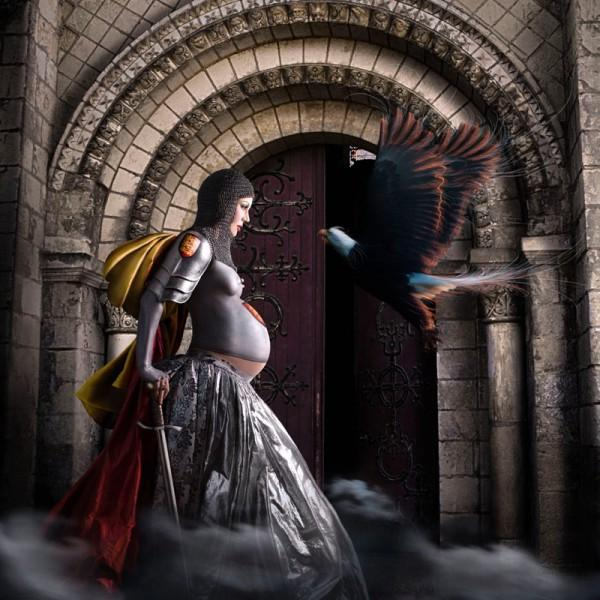
Leonor of Aquitaine (Aliénor d'Aquitaine or Éléonore de Guyenne in French or Eleanor of Aquitaine in English) (Poitiers, 1122 - Fontevraud-l'Abbaye, April 1, 1204). She was Duchess of Aquitaine and Guyena and countess of Gascony in her own right, as well as queen consort of France and England.
TOP 8:
Alexandra Romanov
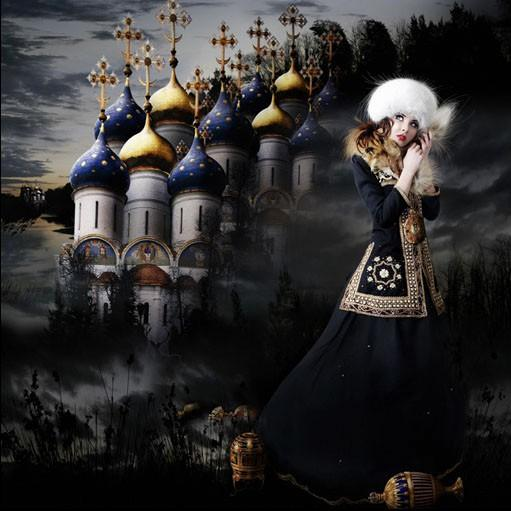
Alejandra Fiódorovna Románova (born Victoria Alejandra Helena Luisa Beatriz de Hesse-Darmstadt), (* Darmstadt, June 6, 1872 - † Yekaterinburg, July 17, 1918). Last Empress of Russia before the October Revolution. Following the courtship of his sister Isabel Fiódorovna with the Grand Duke Sergio Aleksándrovich of Russia, it was how he met the future Nicholas II, with whom he established a solid and intense sentimental relationship that culminated when he married on November 26, 1894, shortly after of the death of Tsar Alexander III. The Russian plebs believed that the new empress had arrived behind a coffin like a black omen. Nicholas II referred to Alix as Sunny, and both professed authentic and selfless love. Proof of this is the abundant correspondence that would survive the history of the Romanovs. His residence of monarchs was set in the palace built by Catherine II, the Great, Tsárskoye Seló, 20 km from St. Petersburg, among others. The couple had five children: Olga (1895–1918), Tatiana (1897–1918), Maria (1899–1918) and Anastasia (1901-1918), and Zarévich Alexis (1904-1918). When her husband went to the front during World War I, she assumed only the effective government of Russia. He could not cope with the gestating social and cultural crises, the ministerial appointments he made were unsuccessful, and his status as a German made her unpopular. He stubbornly opposed the idea of giving the country a constitutional regime. His frontal stance was against the Bolshevik currents. When the Russian Revolution occurred in February 1917, the Duma induced Nicholas II to his abdication in spite of Alix and was confined with her husband and children in the Alexander Palace, in Tsárskoye Seló, where they all left in August of that year , bound for Tobolsk, Siberia. In the spring of the following year they were transferred to the city of Yekaterinburg, where they were executed in the basement of the Ipátiev house, at dawn on July 17, 1918. After the fall of the Soviet regime, in the 90s, their Remains were exhumed and buried with those of her husband and three of her daughters in the Cathedral of St. Peter and St. Paul in St. Petersburg. She was canonized as a martyr by the Orthodox Church.
TOP 7:
Olympia
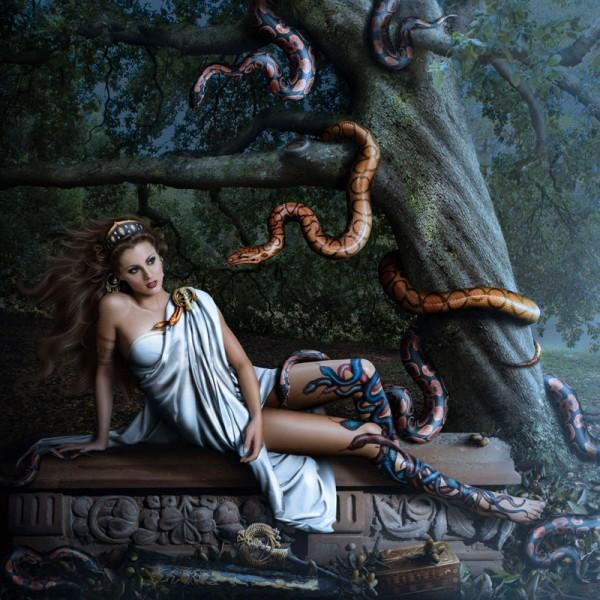
Olympia (375 BC - 315 BC) was the main wife of King Philip II of Macedonia and mother of Alexander the Great. She was the daughter of Neoptólemo I of Epiro, king of Molosia, in the region of Epiro to the northwest of the present Greece. Not many writings on the life of Olympia are preserved. Historians have had to highlight the few fragments that have come to their hands. But there is a legend spread by his enemies, especially by the eldest of all, that was Casandro. It is said that she was a violent, neurotic and superstitious woman. Under his mandate were killed several characters of his time. Olympia did what other kings of its time, that is, lead a policy of eliminating potential rivals. Her maiden name was Polixena, in honor of the young woman named like that, daughter of Priam and sacrificed in the tomb of Achilles. He changed his name to Myrtale when he married Philip, and later changed him again to Olympia, in memory of the victory that Philip obtained in this place and that happened on the same day of the birth of his son Alexander. Years later he changed his name again to Estratonice, in honor of the victory obtained in defense of his grandson Alexander IV against his rival Eurydice (who was an ally of the successors of Cassander of Macedonia).
TOP 6:
Cristina from Sweden

Cristina of Sweden (* Stockholm, December 8, 1626 - † Rome, April 19, 1689) was a queen of Sweden (1632-1654) and Duchess of Bremen and Princess of Verden (1648-1654). Daughter of Gustavo II Adolfo and María Leonor de Brandenburg. Protective arts and patron. He abdicated from the throne of Sweden in 1654. Protestant by birth he converted to Catholicism the same year. He died in Rome at age 63. At the age of 16, Cristina began attending the meetings of the Council of the Kingdom, demonstrating her knowledge of the laws and administration of the kingdom without inconvenience. At age 18 he reached his age of majority and assumed the position of sovereign, gradually replacing Chancellor Oxenstierna in his duties. In 1645 he actively participated in the peace treaty with Denmark (Treaty of Brömsebro), advantageous for his kingdom. In 1648 Sweden signed the Peace of Westphalia, which ended the Thirty Years' War, leaving the kingdom in a position of supremacy in the Baltic region. Cristina and Foreign Minister Oxenstierna had differences in the way of carrying out the agreements, finally imposing their opinion on the queen. On October 17, 1650, the coronation of Cristina was held in Stockholm. The celebrations were many and lasted for weeks. According to custom, he named his cousin Carlos Gustavo as his successor. The sovereign of Sweden had begun a few years ago to develop the cultural life of her kingdom, which had been damaged by religious struggles, including the destruction of works considered Catholic. He adopted the motto "Wisdom is the pillar of the kingdom" (Regni sapientia column). The fame of protector of culture began to expand and several well-known European intellectuals became interested in her projects. Cristina saw the possibility of attracting them to her court through patronage. In this way the French intellectual René Descartes had arrived in Stockholm in 1649, with whom Cristina had corresponded for years, and who died of illness in the same city five months later. In 1652 the artist Sébastien Bourdon arrived, who worked as a court painter for two years, until the queen's abdication and had to return to her country. Cristina appreciated the painting and did not hesitate to give King Felipe IV of Spain the two main treasures of her art gallery, the works of Dürer, Adam and Eve, today at the Prado Museum. During his stay in Rome, the cultural activity of taking new strengths with the queen's projects, which began to bring together artists, scientists and intellectuals in his residence, giving them a basic structure in the form of academies, where he could discuss and create. To the most prominent, the sovereign assigned a stipend and in some cases a pension. The sovereign was interested in archeology, and despite her limited income, financed some excavations. He gathered an excellent collection of ancient sculptures, such as a group of Muses that would later be acquired by Felipe V of Spain. These Muses, currently in the Prado Museum, preside over the museum's new oval room, remodeled by Rafael Moneo. He also built an observatory in his palace, hiring two astronomers, and where he spent hours looking at the sky. The academy system attracted scientists like the physiologist Giovanni Alfonso Borelli, pursued for his sympathies for Galileo's ideas; musicians like Bernardo Pasquini, Alessandro Scarlatti, Arcangelo Corelli and Alessandro Stradella among the most prominent, and poets like Carlo Alessandro Guidi and Vincenzo da Filicaja. It is noteworthy his friendship with the sculptor Gian Lorenzo Bernini, whom he used to visit in his workshop and whom he had protected when he lost the favor of Pope Innocent X. He also worried about decorating his palace with collections of paintings, sculptures, tapestries and books for Your very rich library. Of free-thinking nature, Cristina also did not hesitate to oppose religious persecutions, and she did so, publishing in 1686 a manifesto where she defended the Jews of Rome. He also severely criticized Louis XIV for the persecutions of the Huguenots in 1685 and came into conflict with Pope Innocent XI for his intention to eliminate diplomatic immunity and the right to asylum in Rome, in 1685.
TOP 5:
Catherine the Great

Catherine II of Russia, called the Great (Ekaterina Alekseyevna, in Russian: Екатерина Великая), born in Szczecin (Stettin), Pomerania, [1] currently Poland, on May 2, 1729 and died in St. Petersburg on November 17, 1796 according to the Gregorian calendar. He reigned as Empress of Russia for 34 years, from June 28, 1762 until his death.
TOP 4:
Marie Antoinette

Maria Antonia Josefa Juana de Habsburg-Lorraine (Vienna, November 2, 1755 - Paris, October 16, 1793), better known under the name of Marie Antoinette of Austria, royal princess of Hungary and Bohemia, archduchess of Austria, queen consort of France and Navarra (1774–1791) and later, of the French (1791 - 1792) for their marriage to Louis XVI.
TOP 3:
Elizabeth I of England
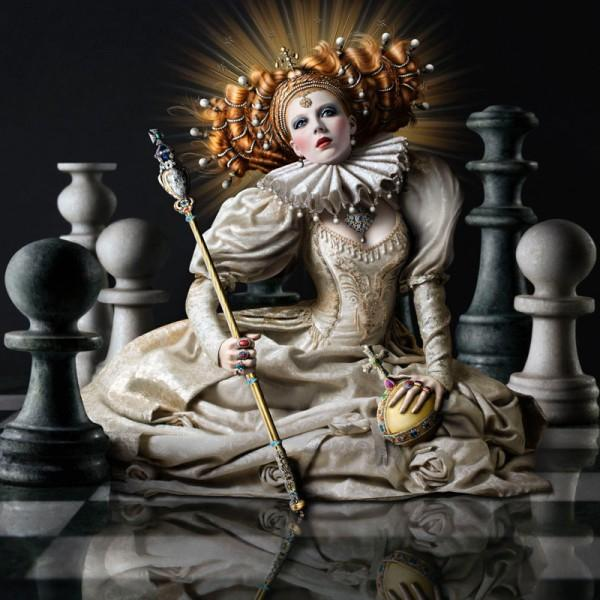
Elizabeth I, in English Elizabeth I, often known as The Virgin Queen, Gloriana or The Good Queen Bess, (Greenwich, September 7, 1533 - Richmond, March 24, 1603) was queen of England and Ireland since 17 November 1558 until the day of his death. Isabel was the fifth and last monarch of the Tudor Dynasty. Daughter of Henry VIII, she was born as a princess, but her mother, Ana Bolena was executed when she was three years old, with which Isabel was declared illegitimate daughter. However, after the death of his half brothers Eduardo VI and Maria I, Isabel assumed the throne. One of the first measures he took was to establish an independent Protestant church in Rome, which would later evolve into the current Church of England, of which he became the highest authority. Isabel was expected to marry, but despite several requests from Parliament, she never did. The reasons for this election are unknown, and have been widely debated. As Isabel grew older, her virginity made her famous, and a cult grew around her, celebrated in portraits, parades and literature of the time. The queen took over a country divided by religious issues in the second half of the 16th century. During his reign, England had great cultural splendor, with figures such as William Shakespeare and Christopher Marlowe; Francis Drake and John Hawkins have also been important characters. He maintained icy relations with Felipe II, with whom he fought a war that economically ruined both countries. His reign of 44 years and 127 days has been the fourth longest in English history, behind those of Victoria I, Jorge III, Isabel II and Eduardo III of England
TOP 2:
Cleopatra

Cleopatra Filopator Nea Thea, Cleopatra VII (in Greek: Κλεοπάτρα Φιλοπάτωρ), was the last Queen of Ancient Egypt of the Ptolemaic dynasty, also called the Lágida dynasty. This dynasty was created by Ptolemy I Sóter, general of Alexander the Great, and was also the last of the so-called Hellenistic Period of Egypt. Cleopatra was born around the year 69 a. C. and died in the year 30 a. C. She was the daughter of Cleopatra V Trifena and Ptolemy XII Auletes, from whom he inherited the throne in the year 51 a. C., around the age of 18, along with her brother Ptolemy XIII, who was only twelve years old, and who would also be her husband (a frequent occurrence in royal Ptolemaic marriages).
TOP 1:
Isabel the Catholic
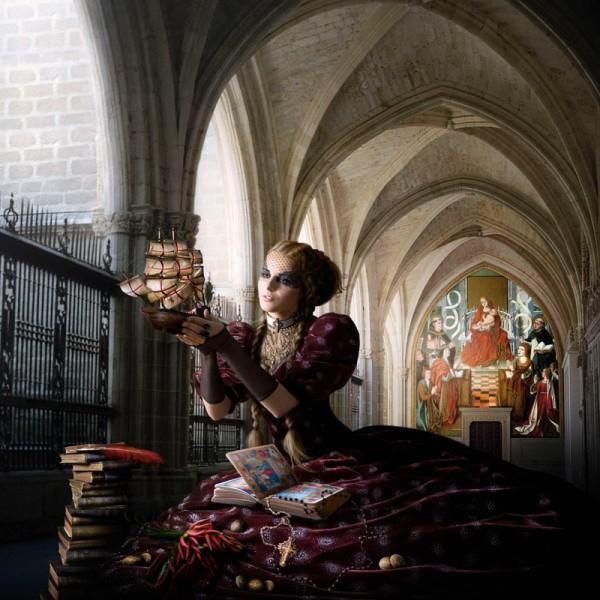
Sabel I of Castile, called the Catholic (Madrigal de las Altas Torres, April 22, 1451 - Medina del Campo, November 26, 1504) was Queen of Castile from 1474 to 1504, also Queen consort of Sicily from 1469 and Aragon since 1479. Since the age of three, Isabel had been engaged to Fernando, son of Juan II de Aragón. However, Henry IV broke this agreement, six years later, to commit it to Carlos, Prince of Viana. The marriage did not consolidate, due to the fierce opposition of Juan II de Aragón. Also unsuccessful were the attempts of Henry IV to marry King Alfonso V of Portugal, cousin in second grade of Isabel and 20 years older than her. In 1464, he managed to gather them in the Monastery of Guadalupe, but she rejected him, due to the age difference between them. Later, when she was 16, Isabel was engaged to Don Pedro Girón, Maestre de Calatrava and brother of Don Juan Pacheco. It is said that Isabel prayed to heaven so that the betrothal would not be celebrated with this 43-year-old man. Don Pedro died of an appendicitis attack, while on the way to meet his fiancee. On September 18, 1468, Isabel was proclaimed Princess of Asturias through the Concordia de los Toros de Guisando. nrique IV agreed again the link between Isabel and King Alfonso V of Portugal, since in the Treaty of the Bulls of Guisando it had been agreed that Isabel's marriage should be celebrated with the approval of the Castilian monarch. Before the refusal of Isabel, the king tried to marry the Duke of Guyena, brother of Louis XI of France; Meanwhile, Juan II de Aragón, tried to negotiate the wedding with his son Fernando in secret with Isabel. Isabel and her counselors considered that she was the best candidate for husband. The marriage cost Isabel the confrontation with her stepbrother, who came to paralyze the papal bull of dispensation for kinship. Finally, and after the mediation of the Archbishop of Toledo, on December 1, 1471, Pope Sixtus IV eliminated doubts about the canonical legality of the link, through the Bull of Simancas, which dispensed the princes Isabel and Fernando with consanguinity . He reached the throne after winning the War of the Spanish Succession (1475-1480), facing the supporters of his niece Juana. Isabel is proclaimed Queen of Castile on December 13, 1474 in Segovia, based on the Treaty of the Bulls of Guisando She was a woman of great character and with a lot of her own decision. With her children, she was severe, but a good mother, making them understand that they had obligations because of their rank of children of kings, and that they had to sacrifice themselves for that reason. He believed in the projects of Christopher Columbus despite the many criticisms and adverse political reactions of the Court and the scientists; A legend says that he financed with his jewels the trip that would lead to the discovery of America. It was really a group of merchants, the same who financed the visit of Fernando de Aragón to marry her. During the common reign with Fernando there were events of great importance for the future of the kingdom, such as the establishment of the Holy Inquisition (1480), the creation of the Holy Brotherhood, the incorporation of the Nasrid Kingdom of Granada, as well as the religious unification of the Hispanic Crown, based on the forced conversion of the Jews, under penalty of expulsion (Edict of Granada, 1492) and later of the Muslims. Finally, the annexation of Navarra (1512), (already dead the queen) meant the origin of the future Kingdom of Spain. For his military campaigns he had the service of Gonzalo Fernández de Córdoba (The Great Captain), who intervened in the conquest of Granada (1492), in the first two Wars of Italy and in the capture of Cephalonia (1500).



